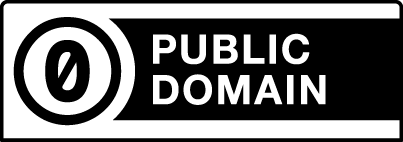- Photos & Map
How would you like to arrive?
- Call
- Description
- Good to know
- Nearby
Built 1866-1868 by Conrad Wilhelm Hase (1818-1902), independent architect, consistorial master builder of the Lutheran Church of Hanover and professor at the Technical University of Hanover. Conrad Wilhelm Hase also drew up the plans for the entire interior of the church. The consecration took place on December 15, 1867.
A model of the Eitzendorf church is said to have been exhibited at the World's Fair in Chicago (1893). There is an identical church in Eickeloh. There is said to have been a chapel in Eitzendorf as early as 1200 (the mother parish was Wechold). A church in Eitzendorf is mentioned in 1496, which was thoroughly overhauled in 1687. As early as 1680, Lieutenant Jürgen Jobst v. Kruogh (Krouss-Eitzendorf 81) donated a new pulpit to the church. In 1693, the v. Kruogh family was given their own hereditary burial ground under the tower.
All that remains of the old church today is the Gothic baptismal font (ca. 1500), the Flemish chandelier donated by the v. Kruogh family (1729) and the 1794 bell. The altar and pulpit are made of fired ceramics, the altar has the crucified Christ in the middle, surrounded by four depictions of sacrifices from the Old Testament (Abel, Isaac, Melchizedek, Aron). The same depiction can be found carved in wood in the church in Magels. The four evangelists (Matthew, Mark, Luke and John) are depicted on the pulpit. Around 100 different brick shapes were used during construction.
In 1998, the windows were renewed (on the long sides and two choir windows), which were consecrated on December 13, 1998. In 2003, the third choir window was also renewed - made possible by a bequest from Harry Meyer. All the designs were created by the artist Barbara Schönian. They were produced by the Peters stained glass company in Paderborn.
A model of the Eitzendorf church is said to have been exhibited at the World's Fair in Chicago (1893). There is an identical church in Eickeloh. There is said to have been a chapel in Eitzendorf as early as 1200 (the mother parish was Wechold). A church in Eitzendorf is mentioned in 1496, which was thoroughly overhauled in 1687. As early as 1680, Lieutenant Jürgen Jobst v. Kruogh (Krouss-Eitzendorf 81) donated a new pulpit to the church. In 1693, the v. Kruogh family was given their own hereditary burial ground under the tower.
All that remains of the old church today is the Gothic baptismal font (ca. 1500), the Flemish chandelier donated by the v. Kruogh family (1729) and the 1794 bell. The altar and pulpit are made of fired ceramics, the altar has the crucified Christ in the middle, surrounded by four depictions of sacrifices from the Old Testament (Abel, Isaac, Melchizedek, Aron). The same depiction can be found carved in wood in the church in Magels. The four evangelists (Matthew, Mark, Luke and John) are depicted on the pulpit. Around 100 different brick shapes were used during construction.
In 1998, the windows were renewed (on the long sides and two choir windows), which were consecrated on December 13, 1998. In 2003, the third choir window was also renewed - made possible by a bequest from Harry Meyer. All the designs were created by the artist Barbara Schönian. They were produced by the Peters stained glass company in Paderborn.
Good to know
Openings
Author
Mittelweser-Touristik GmbH
Lange Straße 18
31582 Nienburg/Weser
Organization
Mittelweser-Touristik GmbH
License (master data)
Mittelweser-Touristik GmbH
Nearby








